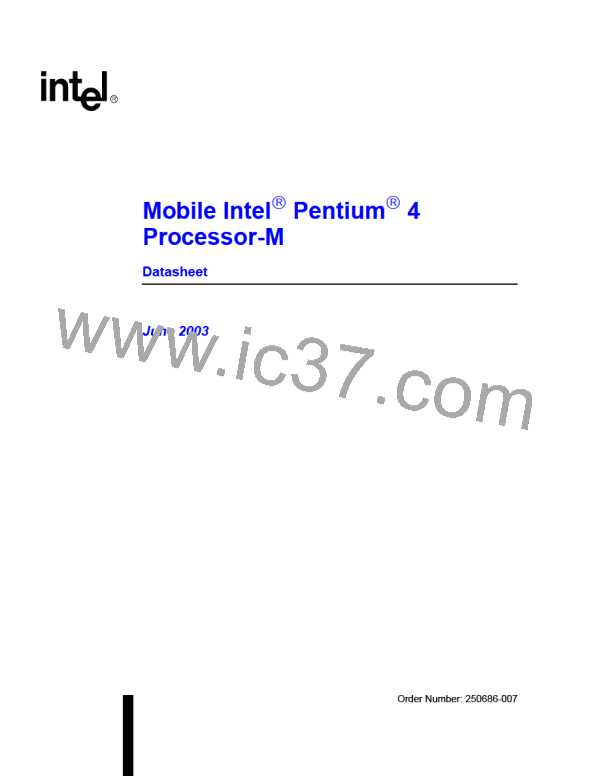System Bus Signal Quality Specifications
Note: Oscillations below the reference voltage can not be subtracted from the total overshoot/undershoot
pulse duration.
3.3.4
Activity Factor
Activity Factor (AF) describes the frequency of overshoot (or undershoot) occurrence relative to a
clock. Since the highest frequency of assertion of any signal is every other clock, an AF = 1
indicates that the specific overshoot (or undershoot) waveform occurs EVERY OTHER clock
cycle. Thus, an AF = 0.01 indicates that the specific overshoot (or undershoot) waveform occurs
one time in every 200 clock cycles.
For source synchronous signals (address, data, and associated strobes), the activity factor is in
reference to the strobe edge, since the highest frequency of assertion of any source synchronous
signal is every active edge of its associated strobe. An AF = 1 indicates that the specific overshoot
(undershoot) waveform occurs every strobe cycle.
The specifications provided in Table 30 through Table 33 show the maximum pulse duration
allowed for a given overshoot/undershoot magnitude at a specific activity factor. Each table entry is
independent of all others, meaning that the pulse duration reflects the existence of overshoot/
undershoot events of that magnitude ONLY. A platform with an overshoot/undershoot that just
meets the pulse duration for a specific magnitude where the AF < 1, means that there can be no
other overshoot/undershoot events, even of lesser magnitude (note that if AF = 1, then the event
occurs at all times and no other events can occur).
Note: 1: Activity factor for AGTL+ signals is referenced to BCLK[1:0] frequency.
Note: 2: Activity factor for source synchronous (2x) signals is referenced to ADSTB[1:0]#.
Note: 3: Activity factor for source synchronous (4x) signals is referenced to DSTBP[3:0]# and
DSTBN[3:0]#.
3.3.5
Reading Overshoot/Undershoot Specification Tables
The overshoot/undershoot specification for the Mobile Intel Pentium 4 Processor-M is not a simple
single value. Instead, many factors are needed to determine what the over/undershoot specification
is. In addition to the magnitude of the overshoot, the following parameters must also be known: the
width of the overshoot (as measured above VCC) and the activity factor (AF). To determine the
allowed overshoot for a particular overshoot event, the following must be done:
1. Determine the signal group a particular signal falls into. If the signal is an AGTL+ signal
operating in the common clock domain, use Table 32. For AGTL+ signals operating in the 2x
source synchronous domain, use Table 31. For AGTL+ signals operating in the 4x source
synchronous domain, use Table 30. Finally, all other signals reside in the 100MHz domain
(asynchronous GTL+, TAP, etc.) and are referenced in Table 33.
2. Determine the magnitude of the overshoot (relative to VSS).
3. Determine the activity factor (how often does this overshoot occur?)
4. Next, from the appropriate specification table, determine the maximum pulse duration (in
nanoseconds) allowed.
5. Compare the specified maximum pulse duration to the signal being measured. If the pulse
duration measured is less than the pulse duration shown in the table, then the signal meets the
specifications.
56
Mobile Intel Pentium 4 Processor-M Datasheet

 INTEL [ INTEL ]
INTEL [ INTEL ]